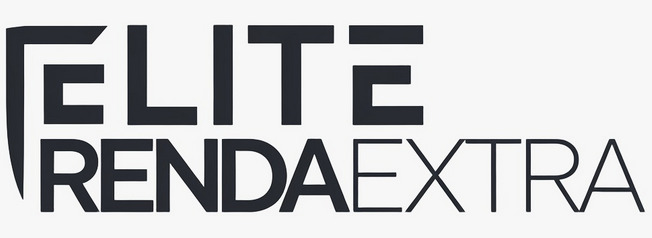Navigating the world of borrowing can feel overwhelming, but a personal loan can be an incredibly flexible and powerful financial tool when used wisely. Whether you’re looking to consolidate high-interest debt, fund a major home renovation, or cover an unexpected expense, understanding how personal loans work in Canada is the first step toward making a smart decision.
This guide is designed to walk you through everything you need to know in 2024. We’ll break down the types of loans available, explain how to qualify, and highlight the key factors that will determine your success in securing the right financing for your unique situation.
What Exactly Is a Personal Loan?
Think of a personal loan as a straightforward agreement between you and a lender (like a bank, credit union, or online institution). The lender gives you a lump sum of money, and you agree to pay it back in fixed monthly installments over a set period, known as the loan term. Each payment includes a portion of the principal (the amount you borrowed) and interest (the cost of borrowing).
Unlike a mortgage, which is specifically for buying a home, or an auto loan, which is for purchasing a vehicle, a personal loan offers incredible versatility. You can use the funds for a wide range of purposes, including:
- Debt Consolidation: Combining multiple high-interest debts (like credit cards) into a single loan with a lower interest rate.
- Home Improvements: Financing a kitchen remodel, a new roof, or finishing a basement without tapping into home equity.
- Major Purchases: Covering the cost of new appliances, furniture, or even a wedding.
- Unexpected Expenses: Paying for emergency medical bills, urgent car repairs, or other unforeseen costs.
The key takeaway is that the loan isn’t tied to a specific asset, which leads us to the different types available.
Types of Personal Loans Available in Canada
When you start your search, you’ll primarily encounter two main categories of personal loans, each with its own set of pros and cons. Understanding the difference is crucial for finding the best fit for your financial profile.
Secured vs. Unsecured Personal Loans
The most significant distinction is whether the loan requires collateral. Collateral is an asset you own (like a car or an investment) that you pledge to the lender as security. If you fail to repay the loan, the lender can seize the asset to recover their losses.
| Feature | Unsecured Personal Loan | Secured Personal Loan |
|---|---|---|
| Collateral Required? | No | Yes |
| Risk to Lender | Higher | Lower |
| Typical Interest Rate | Higher | Lower |
| Approval Criteria | Stricter (relies heavily on credit score and income) | More flexible (asset provides security) |
| Best For | Borrowers with strong credit who don’t want to risk an asset. | Borrowers with fair credit or those seeking a lower interest rate. |
Fixed-Rate vs. Variable-Rate Loans
Another important choice is how your interest is calculated over the life of the loan. This affects the predictability of your monthly payments.
- Fixed-Rate Loans: The interest rate is locked in for the entire loan term. Your monthly payments will never change, making budgeting simple and predictable. This is the most common type of personal loan in Canada.
- Variable-Rate Loans: The interest rate is tied to a benchmark rate (like the lender’s prime rate). If the prime rate goes up or down, your interest rate and monthly payment could change. This can be beneficial in a falling-rate environment but risky if rates rise.
How to Qualify for a Personal Loan: A Step-by-Step Guide
Getting approved for a personal loan is a methodical process. By preparing ahead of time, you significantly increase your chances of not only getting approved but also securing a favourable interest rate.
Step 1: Assess Your Financial Health
Before you even approach a lender, you need to know where you stand. The two most important metrics are your credit score and your debt-to-income (DTI) ratio. In Canada, you can check your credit score through the two national credit bureaus, Equifax and TransUnion. A higher score (typically 660 or above) demonstrates you’re a responsible borrower. Next, you should calculate your debt-to-income ratio by dividing your total monthly debt payments by your gross monthly income. Lenders generally prefer a DTI below 40%.
Step 2: Determine How Much You Need to Borrow
Be realistic and precise. If you’re renovating a bathroom, get quotes. If you’re consolidating debt, add up the exact balances. Borrowing too little can leave you short, while borrowing too much means you’ll pay unnecessary interest. Many lenders offer useful loan payment calculators on their websites to help you estimate monthly payments.
Step 3: Shop Around and Compare Lenders
Don’t accept the first offer you receive. Compare rates, fees, and terms from various sources:
- Big Banks: Often offer competitive rates to existing customers with good credit.
- Credit Unions: May offer more personalized service and flexible criteria.
- Online Lenders: Known for fast application processes and catering to a wider range of credit profiles.
Look for lenders that offer a “soft inquiry” pre-qualification, which allows you to see potential rates without impacting your credit score.
Step 4: Gather Your Documents
Having your paperwork ready will speed up the application process. You will typically need:
- Government-issued photo ID (e.g., driver’s license, passport)
- Proof of income (e.g., recent pay stubs, T4 slips, letter of employment)
- Recent bank statements
- Details of your assets and liabilities (e.g., other loans, mortgage statement)
- Your Social Insurance Number (SIN)
Navigating Personal Loans with Bad Credit in Canada
Securing a loan with a credit score below 660 can be challenging, but it’s not impossible. Your options will be more limited, and the interest rates will be higher to compensate the lender for the increased risk.
Consider these avenues:
- Secured Personal Loans: If you have a paid-off vehicle or other valuable asset, using it as collateral can significantly improve your approval odds.
- Credit Unions: They are often more community-focused and may be willing to look beyond just the credit score, considering your overall financial picture.
- Alternative Lenders: Some online lenders specialize in loans for individuals with fair or bad credit.
A word of caution: Be wary of “guaranteed approval” loans or lenders who charge exorbitant upfront fees. These are often signs of predatory lending. It’s vital to understand your rights as a borrower and only work with reputable institutions.
Frequently Asked Questions (FAQs)
Can I pay off a personal loan early in Canada?
Yes, in most cases. Most personal loans in Canada are “open,” meaning you can make extra payments or pay off the entire balance early without penalty. However, always confirm this before signing the agreement, as some lenders may have prepayment penalties.
How quickly can I get a personal loan?
This varies greatly by lender. Online lenders are often the fastest, with some able to deposit funds in your account within 24-48 hours of approval. Traditional banks and credit unions may take several business days to a week.
Will applying for a personal loan affect my credit score?
Yes, but the impact is usually minor and temporary. When you formally apply, the lender performs a “hard inquiry” on your credit report, which can cause a small, temporary dip in your score. This is why it’s wise to use soft-inquiry pre-qualifications during the shopping phase and only submit formal applications to one or two lenders you’ve chosen.
Final Thoughts: Making the Right Choice for Your Finances
A personal loan can be a stepping stone to achieving your financial goals, but it’s a significant commitment. The key to a successful borrowing experience is preparation. By assessing your needs, understanding your credit profile, and carefully comparing your options, you empower yourself to make an informed choice.
Always read the fine print of any loan agreement, paying close attention to the interest rate, fees, and repayment terms. Responsible borrowing is about ensuring the loan fits comfortably within your budget and helps improve your financial situation, not hinder it. For more detailed information, you can review the official guide to getting a personal loan in Canada provided by the Financial Consumer Agency of Canada.

